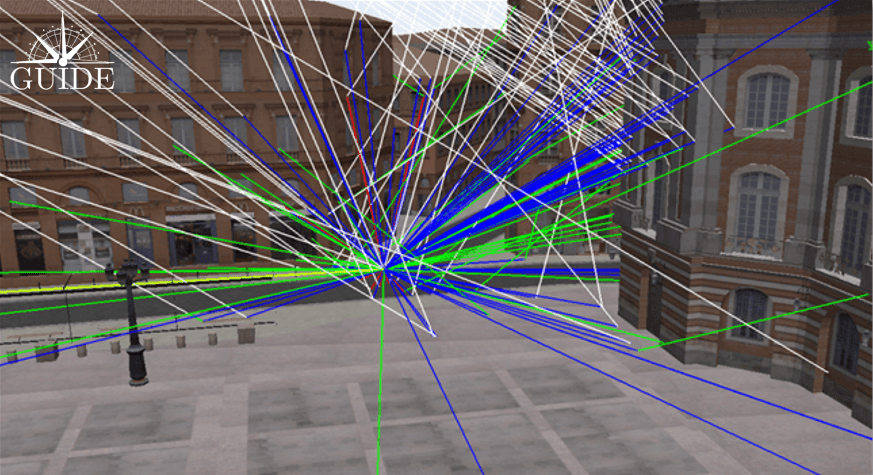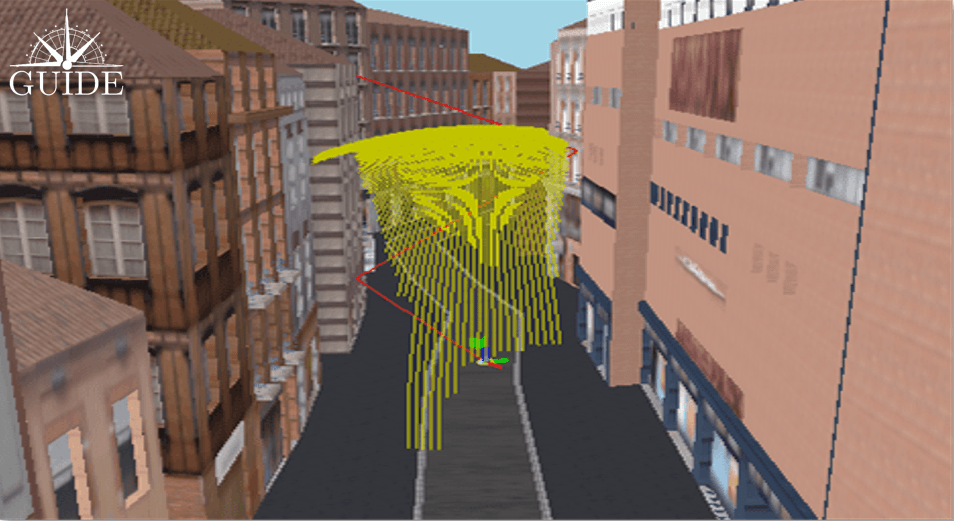GNSS Simulation tests
Test technique using constellation simulators to generate synthesised GNSS signals
What is simulation testing?
The simulation of GNSS scenarios using constellation generators has always stood out as a very useful alternative to real tests in the aeronautical sector or any other benefiting from an open air environment.
The GNSS signals used for testing are synthesized. They are obtained from calculations using statistical propagation models.
Why perform GNSS simulation tests?
The analyses obtained with this test method notably provide results which could not have been obtained otherwise.
The scenarios are designed from the ground up, to be used at all latitudes, in the past or in the future. In the latter case, it is even possible to simulate new signals and new constellations.
The simulation sessions save precious time by isolating the problems for evaluating GNSS terminals in a synthesized, simplified and perfectly controlled environment. Position measurements in real configurations, for example in an urban environment, are much more complex and the results differ significantly from those obtained in a virtual environment.
The operator of the test bench is able to launch simulation sessions at his convenience. The instrumentation is readily programmable for creating basic scenarios. For more elaborate simulations, GUIDE will develop the situations to be tested with the available models.
Scenarios based on synthesized signals can also be executed on replay test benches (with a SDR Replayer) if they are digitized in a compatible format. This instrumentation is often less expensive than those incorporating a constellation simulator.
Summary:
- A time saver
- Simplified and controlled environment
- Scenarios simulating routes anywhere and at any time
- Scenarios can simulate severe events that are mostly unobservable

Figure 1 : GNSS simulation test bench

Figure 2 : GNSS Simulation by ray tracing – SE-NAV by OKTAL SE
What is specific to GNSS simulation tests?
Simulation offers many advantages for developing GNSS terminals. The scenarios are repeatable, reproducible and adaptable.
The global GNSS system can be configured to, for example, assess the impact of a clock drift, a satellite position error, the reception of erroneous navigation messages or even extreme atmospheric phenomena.
Interfacing a constellation generator to simulation software based on 3-dimensional virtual environments makes it possible to study multi-path and dispersion phenomena under sufficiently realistic conditions.
GNSS signals are deterministic. Results are available from the first execution of the scenario.
Summary:
- Data: that are Reproducible & Repeatable
- Scenarios: made to measure and adaptable
- Measurements: Precise and deterministic
- Errors: Simulation of severe global system Errors (GNSS)

Photo credit : OKTAL – SE
What are the basic functions of gnss simulation?
A constellation generator is able to simulate all the GPS, GALILEO, GLONASS, BEIDOU constellations and those covering regionalized areas. As mentioned previously, the development tools are capable of intervening on clocks, orbits, messages and atmospheric phenomena.
Naturally, the location, date, time and speed of the virtual vehicle are defined in the scenario. Depending on the configuration, several different antenna patterns can be used and modified. The signal strengths can be adjusted to, for example, determine the sensitivity threshold of the terminals under test.
Summary:
-
-
- Control of global system aspects (GNSS)
- Control of places and times
- Control of the main radio-frequency factors
-

Photo credit : M3 Systems
